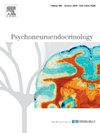评估月经周期分期背景下唾液激素的附加价值:一种机器学习方法和应用程序实现
IF 3.4
2区 医学
Q2 ENDOCRINOLOGY & METABOLISM
引用次数: 0
摘要
目的唾液激素评估是月经周期研究中常用的方法,但其对月经周期准确分期的有效性一直受到质疑。在目前的研究中,我们探索了使用机器学习方法评估月经周期分期的唾液激素的可能性和局限性。具体来说,我们确定了在各种情况下如何安排唾液取样,以最大限度地提高从唾液雌二醇和黄体酮预测月经周期阶段的准确性。方法:我们使用的数据集包括每日唾液雌二醇和黄体酮评估,尿液排卵测试,以及来自68名女性(年龄:18-35岁)的136个周期的准确前后周期天数计数。采用支持向量机(SVM)方法评估唾液激素评估对月经周期预测精度的提高,使用一系列模型来反映月经周期研究中的实际情况。结果在有足够的计数方法或尿液排卵试剂盒的情况下,单次唾液激素评估并不能显著提高月经周期的预测。当没有计数方法可用时,只有黄体酮而不是雌二醇的测量可以充分区分月经周期,特别是黄体酮在识别黄体中期的效果最好。然而,当评估多个时间点时,唾液激素评估确实显著改善了周期阶段的预测,并且值可以相互参考。添加第二个评估时间点对雌二醇比黄体酮值更有帮助,但当两种激素联合使用时最有效。重要的是,与通常的做法相反,当唾液在周期阶段之间的过渡期间附近采样时,计数方法不允许做出明确的决定,预测精度最高。这些结果表明,唾液激素评估并非在所有研究设计中都是必要的,但在计数方法不充分或不能做出明确决定时,或包括多个评估日时,评估是有用的。我们的模型结果在一个web应用程序中实现,以帮助研究人员根据他们现有的测量方法评估其月经周期分期的预测准确性。本文章由计算机程序翻译,如有差异,请以英文原文为准。
Evaluating the added value of salivary hormones in the context of menstrual cycle staging: A machine learning approach and app-implementation
Objective
Salivary hormone assessment is commonly used in menstrual cycle studies, but its validity for accurate menstrual cycle staging has been questioned. In the present study, we explore possibilities and limitations of salivary hormone assessment for menstrual cycle staging using a machine-learning approach. Specifically, we determine, how saliva sampling should be scheduled in various scenarios to maximize prediction accuracy of menstrual cycle phases from salivary estradiol and progesterone.
Methods
We utilize a data set including daily salivary estradiol and progesterone assessment, urinary ovulation tests, as well as accurate forward and backwards counts of cycle days over 136 cycles from 68 women (age: 18–35 years). A Support Vector Machine (SVM) approach was chosen to evaluate improvements in prediction accuracy for cycle phases due to salivary hormone assessments, using a series of models designed to reflect practical scenarios in menstrual cycle research.
Results
A singular salivary hormone assessment does not significantly improve prediction of menstrual cycle phases when adequate counting methods or urinary ovulation kits are available. When no counting method is available, only progesterone, but not estradiol measurements can adequately distinguish between cycle phases, specifically progesterone works best in identifying mid-luteal sessions. However, salivary hormone assessment does significantly improve prediction of cycle phases when more than one time-point is assessed, and values can be referenced against each other. Adding a second assessment timepoint is more informative for estradiol than progesterone values, but most effective when both hormones are combined. Importantly, and contrary to common practice, prediction accuracy is highest when saliva is sampled on days near the transitions between cycle phases when counting methods do not allow for a definitive decision.
Conclusion
These results demonstrate that salivary hormone assessments are not necessary in all research designs but are useful when counting methods are inadequate or do not allow for a definitive decision, or when multiple assessment days are included. Results of our models were implemented in a web application to aid researchers in assessing the prediction accuracy of their menstrual cycle staging based on the measures they have available.
求助全文
通过发布文献求助,成功后即可免费获取论文全文。
去求助
来源期刊

Psychoneuroendocrinology
医学-精神病学
CiteScore
7.40
自引率
8.10%
发文量
268
审稿时长
66 days
期刊介绍:
Psychoneuroendocrinology publishes papers dealing with the interrelated disciplines of psychology, neurobiology, endocrinology, immunology, neurology, and psychiatry, with an emphasis on multidisciplinary studies aiming at integrating these disciplines in terms of either basic research or clinical implications. One of the main goals is to understand how a variety of psychobiological factors interact in the expression of the stress response as it relates to the development and/or maintenance of neuropsychiatric illnesses.
 求助内容:
求助内容: 应助结果提醒方式:
应助结果提醒方式:


